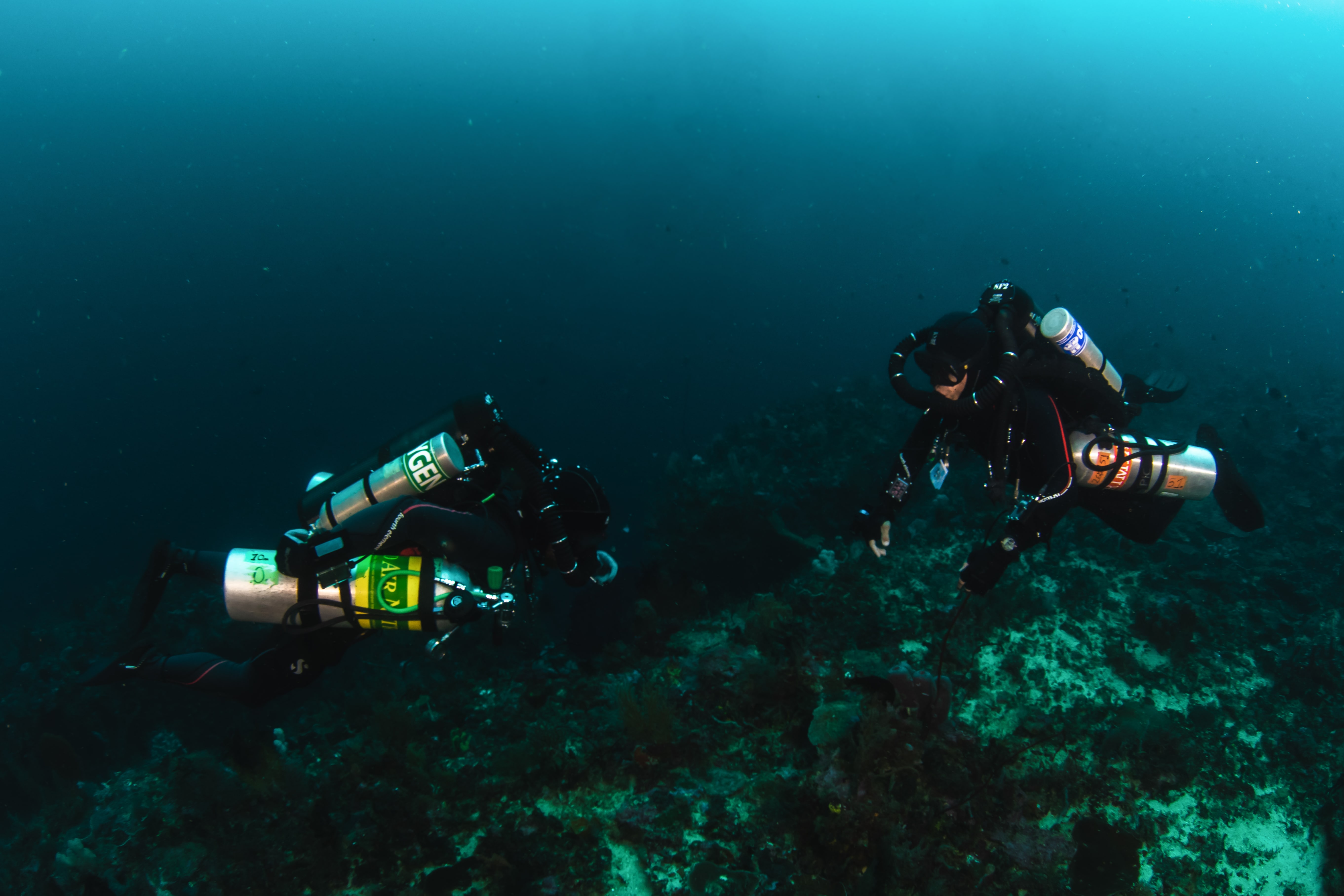
Personally, rebreather diving has always interested me. A few years ago, when I got into technical diving, the technology behind rebreather diving was intriguing, but far away. Nowadays I feel like more and more people are thinking about the transition from Open Circuit diving (OC) to closed circuit rebreather diving (CCR). In this blog post I will be talking about my personal experiences and thoughts before, during and past my TDI SF2 eCCR Helitrox course.
Early 2019 I started actively looking at rebreather diving. I had some friends who were already diving a rebreather, and after completing my IANTD Advanced Trimix course on OC and the gas bill I had to pay… I decided that rebreathers are the ultimate way to go for me in the future. Not too long after that, I contacted my Advanced Trimix instructor, William Remezond. He’s an experienced instructor on the Divesoft Liberty and he was hosting an introduction day on the backmount unit.
On the 27th of April I got the opportunity to get my first CCR experience. William gave me an introduction on the mechanics of the unit and took me for a dive. The first things that really caught my mind were the silence and the change in buoyancy compared to OC. Diving on open circuit a lot of your fine buoyancy adjustments are done using your lungs, however, on a CCR that’s not really possible. Mainly since you’re breathing in and out of a bag called the counter-lung. Regardless of the challenges, it inspired me to continue. The silence was also a big difference compared to diving on OC. I could hear the small tweaks that the unit was doing electronically to maintain the right ppO2 levels, but I could also hear other divers on OC very clearly (even though I couldn’t see them).
On the 18th of January 2020, the day finally arrived where I would start my first ever CCR course. I had decided on doing my TDI Helitrox (45m) course with TDI Instructor Trainer, Philip Christoff at Manta Dive Gili Trawangan, Indonesia. I expected it would be a tough and tiring course, but I knew that it would be worth it in the end.
Day one started off with theory and a complete run-down of the machine including some basic maintenance of some components. We got most of the theory done and went over all the skills in preparation for day two. Even though the course took a week, and there was lots to be done, I noticed that Phil scheduled the course perfectly. There was lots of time for questions, clarifying certain matters and taking a moment to reflect on what was already done.
During the course we did a minimum of 8 hours underwater on the unit, gradually building up towards the 45m level. Throughout those 9 dives the skills were being tested in more and more realistic scenarios. And even though I maybe thought that after those 8 hours I had a great understanding of the machine, I still learn more and more to this day.
So far, post-course I did another 20-25 hours on the unit. These hours were mainly spent diving the new dive site we discovered last year in November. And again, it showed me why so many people prefer to dive rebreathers. The marine life is so much more accessible when there are no ‘bubble makers’ around. One example of that is a dive I did with David Soprek, another SF2 diver at Manta Dive. We went for a 90 minute runtime dive with the DPV’s and the amount of sharks we encountered during that dive cannot be counted on two hands. Also the amazing school of surgeon fish was putting up a great show.
If you’re thinking about making the transition to rebreather diving, I would like to give you some advice based on my experiences. First of all, talk to instructors of different units about your goals when it comes to diving a rebreather. The instructor will be able to give you a detailed insight whether that particular unit is suitable for you or not. Once you have a general idea of what unit you’d like to dive, do some research on the different pro’s and con’s and discuss those with different instructors. You can do try dives on different units, however as I have experienced it, one dive doesn’t tell you very much about the unit. I have spent around 30-35 hours diving the SF2 and I still feel like I’m not always 100% in sync with the machine. Finally, make sure to enjoy it, even though the course might be hard. It is supposed to be fun! Don’t beat yourself up too much if you mess up during your course. You learn every dive, and (I think) no one will complete their first rebreather course flawlessly.
If you have any questions about getting into rebreather diving, the SF2 eCCR or technical training in general, make sure to check out www.mantadive-tech.com. The staff at Manta Dive Gili Trawangan is very helpful and will inform you about all the possibilities!